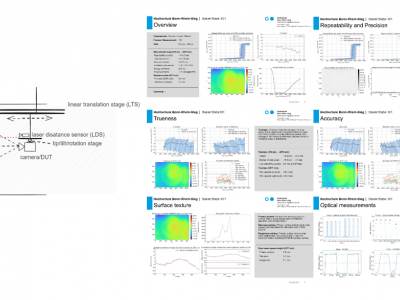*.py
This dataset accompanies the study “Universal Metrics to Characterize the Performance of Imaging 3D Measurement Systems with a Focus on Static Indoor Scenes” and provides all measurement data, processing scripts, and evaluation code necessary to reproduce the results. It includes raw and processed point cloud data from six state-of-the-art 3D measurement systems, captured under standardized conditions. Additionally, the dataset contains high-speed sensor measurements of the cameras’ active illumination, offering insights into their optical emission characteristics.
- Categories:
 146 Views
146 ViewsThis dataset contains results and scripts from experiments evaluating the resilience of the QUIC protocol against handshake flooding attacks. It aims to support researchers and developers in analyzing the performance of QUIC against handshake flooding attacks. The experiments utilize three prominent QUIC implementations: aioquic, quic-go, and picoquic, providing a comprehensive comparison of their resilience. Additionally, to benchmark the performance and resilience of QUIC, SYN flood attacks were conducted against TCP with SYN cookies.
- Categories:
 216 Views
216 Views
The dataset comprises diverse objects detectable by drones during aerial surveys, encapsulating an extensive array of environmental and man-made elements. Encompassing natural entities like trees, water bodies, terrain features, and vegetation, it also incorporates urban objects such as buildings, roads, vehicles, and infrastructure. The dataset delineates distinct categories, encompassing fine-grained details within each classification, catering to the nuances of aerial detection.
- Categories:
 217 Views
217 ViewsSensor arrays are ubiquitous. They capture images in digital cameras, record the swipes of our fingers on the screens of our phones and tablets, or map pressure distribution over an area. Soft capacitive sensor arrays have been proposed to make electronic pressure-sensing skins capable of identifying the location and intensity of touch. However, large arrays of those sensors remain challenging to produce, as they require high-resolution patterning of electrodes and routing of long and thin electrical connections.
- Categories:
 203 Views
203 ViewsAbstract—This paper presents a novel approach to optimizing resource allocation in Internet of Things (IoT) networks, focusing on enhancing energy efficiency (EE) while maintaining age of information (AoI) awareness through device-to-device (D2D) communication. Our proposed solution integrates simultaneous wireless information and power transfer (SWIPT) with energy harvesting (EH) techniques. Specifically, D2D users employ time switching (TS) to harvest energy from the environment, while IoT users utilize power splitting (PS) to obtain energy from base stations (BS).
- Categories:
 853 Views
853 ViewsA new approach addressing the spectrum scarcity challenge in 6G networks by implementing an enhanced licensed shared access (LSA) framework is considered. The proposed mechanism aims to ensure fairness in spectrum allocation to mobile network operators (MNOs) through a novel weighted auction called the fair Vickery-Clarke-Groves (FVCG) mechanism in which the determination of weights is based on the results of the previous auctions.
- Categories:
 354 Views
354 ViewsIn this paper, we develop a hierarchical aerial computing framework composed of high altitude platform (HAP) and unmanned aerial vehicles (UAVs) to compute the fully offloaded tasks of terrestrial mobile users which are connected through an uplink non-orthogonal multiple access (UL-NOMA).
- Categories:
 482 Views
482 ViewsIn this paper, we propose a novel cooperative resource sharing in a multi-tier edge slicing networks which is
robust to imperfect channel state information (CSI) caused by user equipments’ (UEs) mobility. Due to the mobility
of UEs, the dynamic requirements of their tasks, and the limited resources of the network, we propose a smart joint
dynamic pricing and resources sharing (SJDPRS) scenario that can incentivize the infrastructure provider (InP) and
mobile network operators (MNOs). Aiming to maximize the profits of UEs, MNOs and the InP under the task
- Categories:
 372 Views
372 Views





